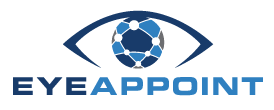As patient expectations shift towards more immediate and comprehensive care, optometrists must adapt to meet these demands. This article explores how the integration of convenience and accessibility can enhance patient satisfaction and improve overall eye health outcomes.
The Modern Patient’s Expectation
Today’s patients are no longer passive recipients of healthcare. They are informed, proactive, and expect services that fit seamlessly into their busy lives. In optometry, this means:
- Flexible Appointment Scheduling: Patients expect the ability to schedule appointments online, with options that include evenings and weekends. The traditional 9-to-5 model is increasingly seen as outdated.
- Digital Engagement: From appointment reminders to follow-up care instructions, digital communication is a key component. Patients appreciate the convenience of receiving texts or emails rather than phone calls or paper letters.
- Comprehensive Care: Convenience also means having access to a wide range of services under one roof. Patients prefer practices that offer everything from routine eye exams to the latest in corrective surgery and a full-service optical shop.
Enhancing Accessibility
Accessibility goes beyond mere convenience; it is about ensuring that all patients, regardless of their circumstances, can receive the care they need. This involves:
- Location and Transport: Practices located in easily accessible areas with good transport links are essential. Some practices are even exploring mobile clinics to reach patients in remote areas.
- Affordability: Transparent pricing and flexible payment options, including accepting various insurance plans and offering payment plans, make eye care accessible to a broader audience.
- Inclusive Care: Providing services for patients with disabilities, language barriers, and other special needs ensures that no one is left behind. This can include wheelchair-accessible facilities, interpreters, and staff trained in working with diverse populations.
Technological Innovations
Technology plays a critical role in enhancing both convenience and accessibility in optometry:
- Teleoptometry: Virtual consultations and telehealth services have surged in popularity, especially during the COVID-19 pandemic. These services allow patients to consult with their optometrists from the comfort of their homes, making eye care more accessible to those with mobility issues or tight schedules.
- Advanced Diagnostic Tools: Modern diagnostic equipment that delivers faster and more accurate results enhances patient experience. For instance, optical coherence tomography (OCT) provides detailed images of the retina in seconds, allowing for quicker diagnosis and treatment plans.
- Online Services: From booking appointments and ordering contact lenses to accessing medical records, online services offer unparalleled convenience. Practices with robust online platforms can significantly enhance patient satisfaction.
Case Study 1: Mobile Clinics
A rural optometry practice in Kansas implemented a mobile clinic to serve patients in remote areas. This initiative not only increased accessibility but also reduced missed appointments, as patients no longer had to travel long distances.
Case Study 2: Teleoptometry in Urban Settings
An urban optometry practice in New York City integrated teleoptometry services, allowing patients to have follow-up consultations and minor eye health checks virtually. This service proved particularly popular among working professionals who found it difficult to visit the clinic during office hours.
The Road Ahead
To remain competitive and meet patient expectations, optometry practices must continue to innovate. Embracing convenience and accessibility not only improves patient satisfaction but also leads to better health outcomes. As technology advances and patient needs evolve, practices that prioritize these aspects will thrive.
Convenience and accessibility are not just buzzwords; they are critical components of modern optometry. By focusing on these areas, optometrists can provide high-quality care that meets the needs of today’s patients.

